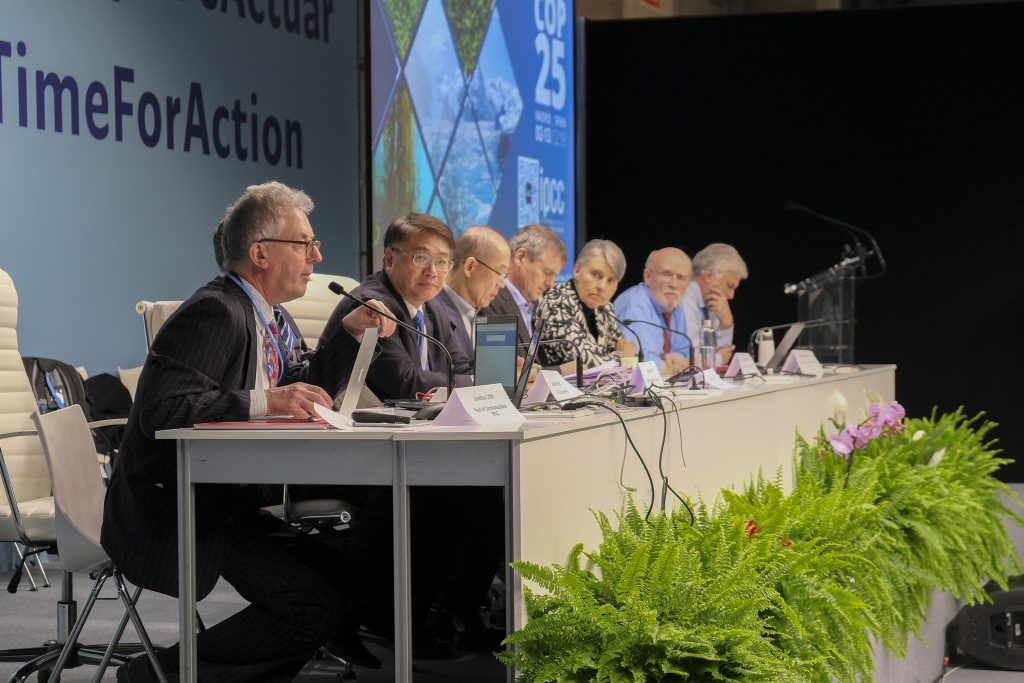Editor’s Note: This post was last updated December 9, 2019.
On March 13, 2018, the Intergovernmental Panel on Climate Change (IPCC) celebrated its 30th anniversary. Established by the World Meteorological Society and the United Nations Environment Programme in 1988, the IPCC’s mandate is “to provide the world with a clear scientific view on the current state of knowledge in climate change and its potential environmental and socio-economic impacts.”
The unique power of this UN climate body lies in the breadth and depth of its climate assessment reports: Thousands of experts from around the world synthesize the latest scientific findings on the impacts of and the potential responses to climate change with the IPCC’s comprehensive Assessment Reports released every five to seven years. There is nothing else like it.
But just how much work goes into these reports?
Let’s take the most recent report, the Fifth Assessment Report, or AR5 for short. Experts from more than 80 countries contributed to this assessment, which was released in three parts over 2013 and 2014. More than 830 lead authors and review editors synthesized the work of 1,000 contributors for the report, with about 2,000 expert reviewers weighing in with more than 140,000 review comments. The final product is truly a collaborative labor of love – all 4,000 pages of it.
Since its establishment 30 years ago, the IPCC has released five of these global reports, which inform international policy and climate negotiations around the world.
These Assessment Reports have had quiet but powerful ripple effects – by emphasizing the importance of international cooperation to tackle the climate challenge, the IPCC’s First Assessment Report in 1990 played a major role in the creation of another UN climate body, the UN Framework Convention on Climate Change (UNFCCC), in 1992, and the Conference of the Parties (COP), first held in Berlin in 1995.
Twenty years later, the UNFCCC, leveraging the COP process, would eventually adopt a historic climate agreement, the Paris Agreement on climate change, which now commits the world to keep total global warming to well below 2° Celsius.
In 2007, the Nobel Peace Prize was awarded jointly to the IPCC and to former U.S. Vice President Al Gore for “their efforts to build up and disseminate greater knowledge about man-made climate change, and to lay the foundations for the measures that are needed to counteract such change.” The prize was awarded following the panel’s Fourth Assessment Report release in 2007, which emphasized that “the warming of the climate system is unequivocal” and informed the Paris Agreement’s goal of well below 2°C of global temperature rise.
What are the latest findings from the IPCC?
Since its 30th anniversary, the IPCC has released four more reports.
- In one of its most groundbreaking reports, Special Report: Global Warming of 1.5ºC, which was released in October 2018, IPCC scientists answer the question: How can the world achieve the committed 1.5ºC temperature goal, and what happens if we don’t? Their research reveals that we must take unprecedented — and widespread — action now. In order to prevent warming past 1.5ºC and extreme climate change, we will need to reach net-zero emissions by 2050.
- In May 2019, IPCC released the 2019 Refinement to the 2006 IPCC Guidelines for National Greenhouse Gas Inventories, which provides methodologies for managing national human-caused emissions inventories.
- The IPCC also released the Special Report Climate Change and Land in August 2019, which focuses on the connections among climate change, food security and sustainable land management.
- Finally, in the most recent report released in September 2019 — The Ocean and Cryosphere in a Changing Climate, the IPCC discusses the impacts of climate change on coastal, ocean, polar and mountain ecosystems, as well as the impacts on the human communities that depend on these ecosystems.
Looking ahead, the Intergovernmental Panel on Climate Change will release three reports in 2021, and one report in 2022.

